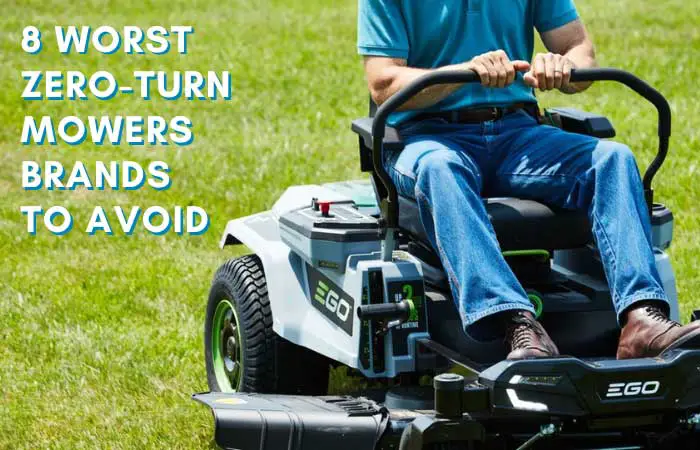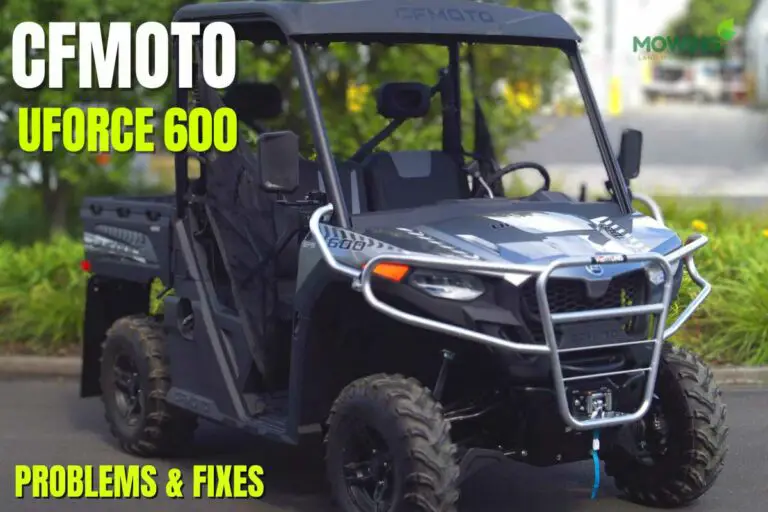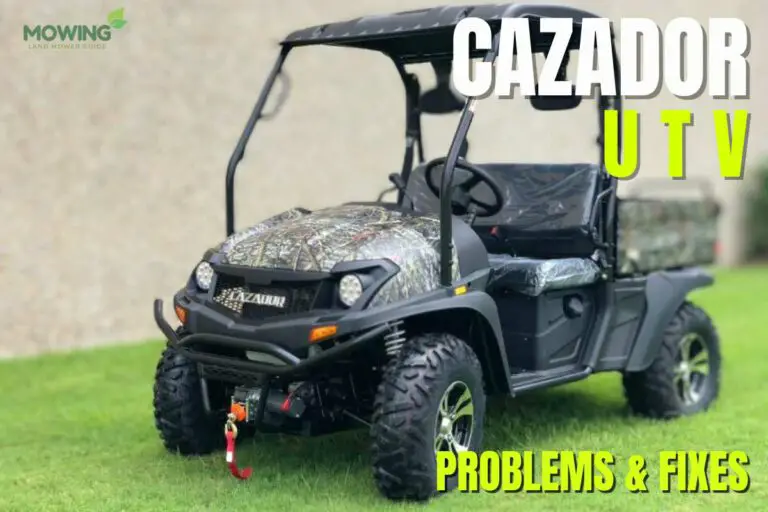
Yamaha vehicles are true toiler on the field. The Yamaha RMAX 1000 is no exception. The outstanding features of this versatile and reliable UTV model have made it popular among UTV enthusiasts globally.
However, it is also very unpredictable on the trail, like many utility vehicles. No one can guarantee whether you will suddenly encounter Yamaha RMAX 1000 problems. In fact, it mostly breaks down untimely in the most awkward situations.
Such a situation is enough to ruin your day. Knowing what kind of problems to expect with your Yamaha RMAX 1000 can save the day. You can understand the problems as they occur and fix them before it does significant damage to your UTV.
Let’s get started!
The Common Yamaha RMAX 1000 Problems and Possible Fixes
Yamaha’s high-horsepower RMAX 1000 is the beast of an off-road vehicle. This side-by-side is more than just a utility vehicle. It’s a complete package designed to handle demanding tasks and rough terrain.
Despite being a relatively new model launched in 2020, Yamaha RMAX 1000 has complications. The most common problems are transmission problems, RMAX exhaust and engine issues, Throttle issues, overheating, performance issues, etc.
Read also: Sany Excavator Problems and How to Fix?
Problem 1: Issues with Yamaha RMAX 1000 Engine
Most of the owners of Yamaha RMAX 1000 are facing engine problems. It’s too common in RMAX Yamaha side-by-side. The engine problems are not specific. You are likely to have any of the following engine problems:
The engine Isn’t Starting:
Most of the time, you’ll find your Yamaha RMAX engine isn’t starting or taking too long to start. It typically fails to start in cold weather. The coolant fluid in the engine becomes frozen. Also, this could happen due to faulty starters or poor battery connections.
Sometimes the RMAX Yamaha engine takes too long to start or starts at first and then stalls. Faulty fuel injectors, worn-out spark plugs, and low fuel pressure might cause delayed starting. These issues are similar to Yamaha lawn mower engine problems.
How to Fix Yamaha RMAX 1000?
Engine Making Knocking Sounds:
Sometimes the engine of RMAX Yamaha makes a knocking or tapping sound while you try to start it. These strange noises might be due to internal engine damage. A damaged piston or failing rod bearing might be the possible reason.
How to Fix It?
Engine Failure:
Sometimes your RMAX Yamaha engine fails to operate when you neglect to take care of it. As part of regular maintenance, you should change the oil. When the oil remains for long, it forms a sludge.
The oil sludge clogs crucial engine parts and finishes it sooner or later. Moreover, damaged parts of the engine can prevent the engine from functioning. Proper maintenance can prevent the engine failure problem.
How to Fix It?
Coolant Boiling:
Boiling coolant indicates a low coolant level. A low coolant level can reduce the overall performance of the engine. Lower fuel efficiency and a failing heating system lead to boiling coolant or anti-freeze. Also, the leaks in the coolant system cause the pressure of liquid or the boiling point of coolant to drop.
How to Fix It?
Squeaky and Rigid Brake:
Your Yamaha RMAX 1000 engine might have squeaky brakes. Firstly, poor lubrication is the main reason for squeaky brakes. The brake parts require proper lubrication to function smoothly.
Otherwise, they rub against each other and make a squeaky sound. Moreover, dust and debris accumulation can lead to a squeaking sound in the engine. In addition to squeaky brakes, Yamaha RMAX could have rigid brakes.
How to Fix It?
Problem 2: Transmission Problem
The transmission of the Yamaha RMAX 1000 is intended to deliver power to wheels for smooth operation. Worn clutch or bearings are to blame the most for transmission problems. It will cause difficulty in shifting the clutch or resistance.
Moreover, transmission problems can also occur because of low or contaminated transmission fluid. Lastly, debris on the transmission filter can cause problems in the Yamaha RMAX transmission.
How to Fix Transmission Problem?
Read also: John Deere 1025r Hydraulic Problems & How To Fix?
Problem 3: Issues with Throttle
An erratic or unresponsive throttle is one of the most common issues with the Yamaha RMAX throttle. It may lead to numerous challenges, such as hesitation while accelerating, unusual engine noise, and rough performance.
The malfunctioning TPS (throttle position sensor) often causes hesitation during acceleration. The TPS sends incorrect information to the ECM (engine control module).
As a result, the engine doesn’t respond as it should. The engine will likely stumble or misfire because of rough performance. Thus, the UTV may lack a smooth power supply.
The engine produces too much noise or vibration because of unresponsive throttle behavior. Harmful gas, a loose throttle, fuel starvation, and a faulty seat belt sensor could also cause throttle issues.
How to Fix Issues with Throttle?
Problem 4: Yamaha RMAX Overheating
A faulty water pump, clogged radiator, faulty temperature sensor, blown head gasket, and air bubbles in the coolant can cause overheating. Dirt and debris gathered in the radiator interfere with the cooling process triggering overheating.
A faulty temperature sensor causes overheating by not triggering the fan when the temperature exceeds the limit. You can expect to overheat when the head gasket is blown away. Also, the coolant cannot cool the engine with air bubbles trapped inside.
How to Fix RMAX 1000 Overheating?
Problem 5: Issues Yamaha RMAX 1000 Exhaust
Yamaha RMAX 1000 will likely have two issues with exhaust as follows:
Glowing RMAX 1000 Exhaust:
A glowing exhaust is a fire hazard that can severely impact the Yamaha RMAX. The exhaust could glow red when the fuel running leans into the low throttle opening range. A clogged exhaust can also cause glowing exhaust.
How to Fix It?
Quiet Yamaha RMAX Exhaust:
A quiet Yamaha RMAX exhaust is essential for noise reduction. Besides being a blessing, it can cause issues like backpressure in the system.
This reduces horsepower and torque and gradually reduces engine performance. The quiet exhaust has insufficient airflow, which makes the engine work harder. Therefore, the engine requires more fuel.
Too much carbon build-up in the engine is another result of a quiet exhaust system. It results in loss of power and further damage to the engine.
How to Fix It?
Read also: CFMOTO UFORCE 1000 Problems & Fixing Guide
Problem 6: Battery Drain
The Yamaha RMAX 1000 consists of several electrical mechanisms. They are supposed to be turned off when the UTV is not in use. If you leave the electrical components turned on, they will slowly but surely drain the battery.
Moreover, the battery drains too fast if they are not charged properly. Sometimes, the battery doesn’t charge appropriately because of a bad battery, defective charging system or problematic parasitic battery drain.
How to Fix Battery Drain Issue?
Problem 7: Header Pipe Cracking Issues
Header pipe cracking is a common issue with the Yamaha RMAX 1000. A hot header pipe or broken glowing exhaust is mostly to blame for header pipe cracking.
The exhaust temperature on the Yamaha RMAX 1000 can be as high as 900oF. The extremely high temperature can make the header pipe of Yamaha RMAX breakable. As a result, it cracks.
Header pipe cracking can also happen due to improper installation and vibration. Also, when a UTV’s header pipe gets old, it will likely corrode and gradually become more damaged.
How to Fix It?
Problem 8: Accelerating Problems
The Yamaha RMAX will have issues like strict or sluggish acceleration when accelerating. Fuel starvation, issues with air intake and faulty ignition systems are mostly to blame for accelerating problems.
A dirty carburetor, faulty fuel pump or clogged fuel filter causes fuel starvation. The fuel cannot reach the engine due to these and causes problems while accelerating.
A faulty ignition system results from a loose connection, a weak ignition coil and a defective spark plug. These contribute to accelerating problems. Finally, a clogged air filter leads to restricted airflow and, thus, contributes to problems when accelerating.
How to Fix It?
Read also: 9 Common John Deere 5075E Problems and Fixes
Problem 9: Flooded Fuel Tank
Rain entering through the nooks and crannies of your Yamaha RMAX can cause the fuel tank to flood. The water leaks infiltrate into the fuel tank and result in flooding the fuel tank.
How to Fix It?
Problem 10: Issues with Clutch
Damage on the clutch plates is mostly to blame for issues with the clutch. Damages on clutch plates cause the clutch plates to have no grip, resulting in poor shifting or slippage. This could also happen due to a misaligned or stretched clutch cable.
How to Fix It?
Problem 11: Cab Heat Issues
The cab heater of the Yamaha RMAX 1000 allows using of the UTV flexibly in subzero temperatures. The rider will likely feel some heat, mainly around the rear seat footwells beside the engine cover. This is normal, though, but unusual when the heat builds up.
How to Fix It?
Problem 12: Problem with Suspension
While riding on rough terrain, the suspension system absorbs vibration. However, the suspension system of Yamaha RMAX can worn-out with time. Broken suspension arms, bushings or shock also cause suspension problems.
How to Fix It?
Final Thoughts
The Yamaha RMAX 1000 is an excellent UTV option for off-road enthusiasts. It stands out from the crowd for its extraordinary performance and adaptability. But it has various problems like other UTVs that affect its performance.
Luckily, you are now well aware of the Yamaha RMAX 1000 problems and the possible solutions. You can now conquer any problem that comes your way while having an enjoyable off-road experience. Best of Luck!







